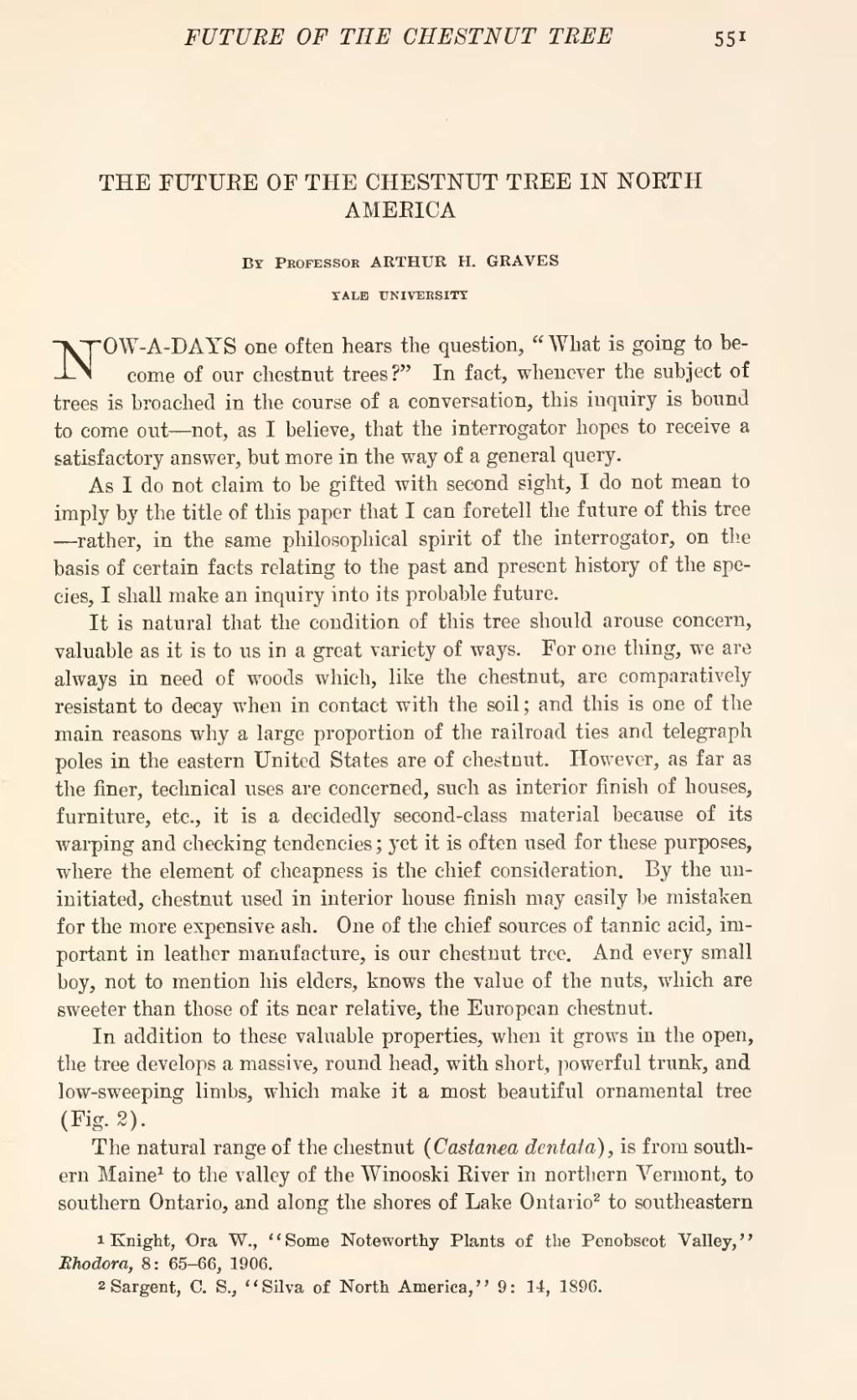| THE FUTURE OF THE CHESTNUT TREE IN NORTH AMERICA |
By Professor ARTHUR H. GRAVES
YALE UNIVERSITY
NOW-A-DAYS one often hears the question, "What is going to become of our chestnut trees?" In fact, whenever the subject of trees is broached in the course of a conversation, this inquiry is bound to come out—not, as I believe, that the interrogator hopes to receive a satisfactory answer, but more in the way of a general query.
As I do not claim to be gifted with second sight, I do not mean to imply by the title of this paper that I can foretell the future of this tree—rather, in the same philosophical spirit of the interrogator, on the basis of certain facts relating to the past and present history of the species, I shall make an inquiry into its probable future.
It is natural that the condition of this tree should arouse concern, valuable as it is to us in a great variety of ways. For one thing, we are always in need of woods which, like the chestnut, are comparatively resistant to decay when in contact with the soil; and this is one of the main reasons why a large proportion of the railroad ties and telegraph poles in the eastern United States are of chestnut. However, as far as the finer, technical uses are concerned, such as interior finish of houses, furniture, etc., it is a decidedly second-class material because of its warping and checking tendencies; yet it is often used for these purposes, where the element of cheapness is the chief consideration. By the uninitiated, chestnut used in interior house finish may easily be mistaken for the more expensive ash. One of the chief sources of tannic acid, important in leather manufacture, is our chestnut tree. And. every small boy, not to mention his elders, knows the value of the nuts, which are sweeter than those of its near relative, the European chestnut.
In addition to these valuable properties, when it grows in the open, the tree develops a massive, round head, with short, powerful trunk, and low-sweeping limbs, which make it a most beautiful ornamental tree (Fig. 2).
The natural range of the chestnut (Castanea dentata), is from southern Maine[1] to the valley of the Winooski River in northern Vermont, to southern Ontario, and along the shores of Lake Ontario[2] to southeastern

